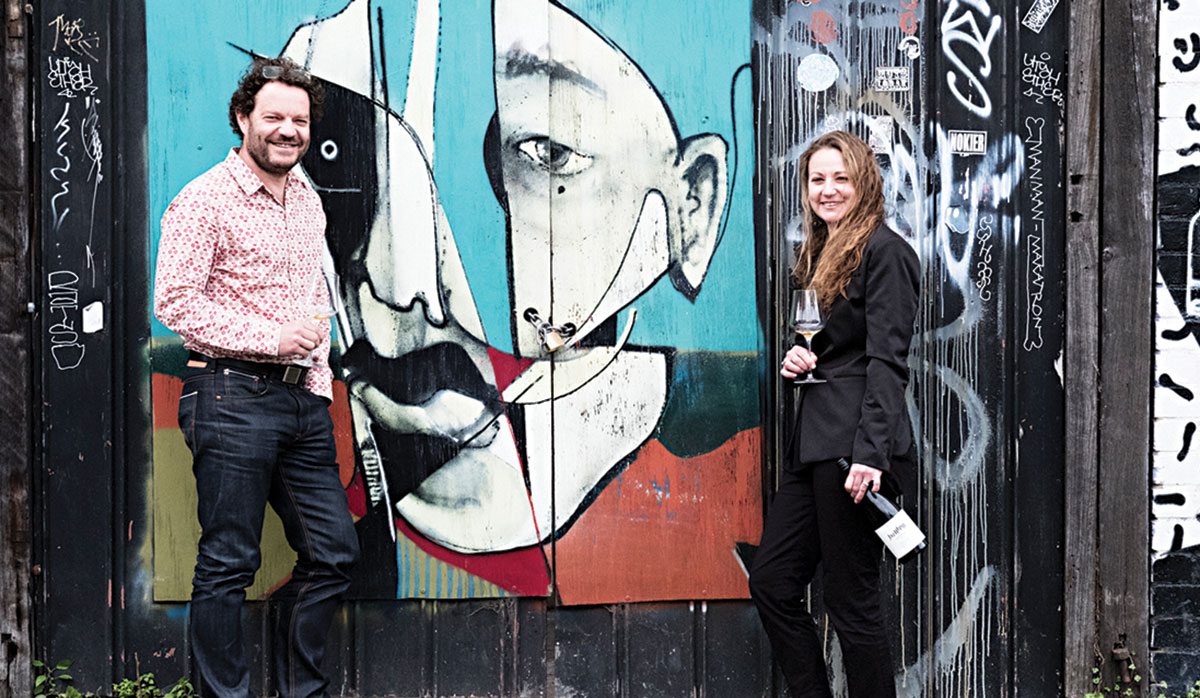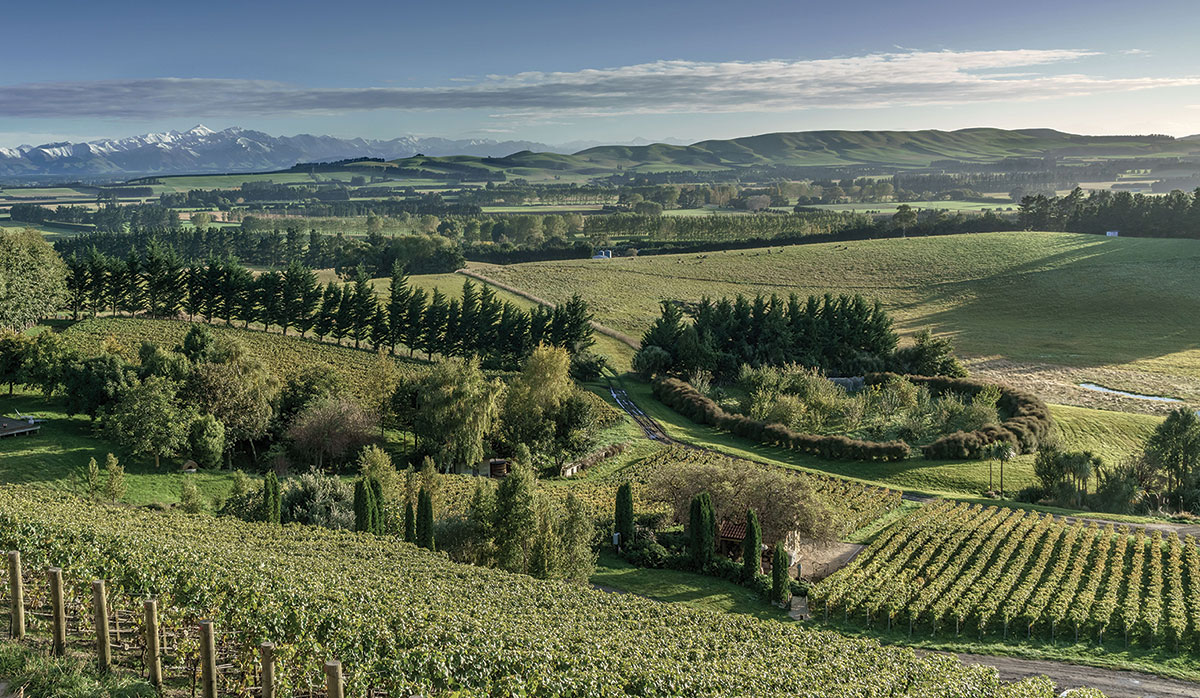Mr Grumpy - Dinner party etiquette
OPINION: It is frustrating to take a special bottle to a dinner party and have the host murmur thanks before consigning the bottle to his or her wine cellar.
Tucked away in the chalky hills of Weka Pass, Bell Hill is much more than a vineyard; it's an ongoing conversation between people, soil, and commitment.
Named in 1918 for its distinctive bell-like shape when viewed from the south, this old lime quarry was planted in vines in 1997 by Sherwyn Veldhuizen and Marcel Giesen. Steeped in geological and natural history, it has become one of New Zealand's most distinctive estates, both physically and philosophically.
Anyone who has heard Sherwyn speak about the land knows how deeply she feels its pull. “We are a tiny pointer, swimming against the stream, not in the main current. Holding a flame to tradition, showing the diversity of possibilities.” In New Zealand, their influence is limited, she says. “But overseas, the recognition of our winegrowing philosophy, our pursuit of soil, our nod to the Old World home of Chardonnay and Pinot Noir – that’s understood and supported.”
For the past two decades, Bell Hill has achieved near-cult status among wine collectors here and abroad. The wines – tiny quantities of Chardonnay and Pinot Noir – are highly sought after, but their rarity is not the whole story. Those who drink the wines are also captivated by the sense of purpose and discipline that has shaped their making – Sherwyn and Marcel’s almost monastic devotion to uncovering what this site has to say. “The vision was very clear from the start,” Sherwyn recalls. “Does limestone matter? Is it truth or myth? We wanted to find the truth – or not – through soil, through high plant density, through Burgundian vineyard architecture, the detail in the vineyard… the philosophy of winegrowing, not grape growing separated from winemaking.”
The work has been painstaking. Tiny parcels have been established by hand at high density, and farmed organically, and with biodynamic practices, since 2007. Cultivation is mechanical and yields miniscule – sometimes too much so, thanks to rains and frosts. The initial years were tough. Sherwyn and Marcel lived on site part time for a decade, spending weekends, harvest and frost season in a cabin with no electricity (though, as Jancis Robinson once noted, furnished with excellent wines and wine glasses). Alongside their meticulous winegrowing, the couple have steadily obtained more land to restore wetlands, regenerate native plantings and grow crops for compost inputs. “It’s not just about vines,” Sherwyn says. “It’s about creating a whole, living farm organism.”
When asked how limestone expresses itself in their wines, the answer is quick: “Longevity. That comes with shy early evolution, hence our later releases. Structurally, acidity becomes the backbone and framework of the wine. And then there’s palate direction and flow – linearity, salinity, salivation, precision, tension, energy. It’s lime life, or limelight – a soil derived from living marine life.” Their wines are often described as precise, complex, and long-lived, but Marcel refutes the idea that such a style is intentional, or winemaker driven. “We don’t ‘wine make’ for this. It comes from the soil, from the voice of the site.” At Bell Hill, terroir always has the last word.
The site is far from easy to farm. The terrain is unforgiving, the climate ever more marginal, the demands endless. “The site teaches you humility,” says Sherwyn. “The power of the land, how adaptive you must be, how responsive to weather. It demands detail.” Bell Hill has slowly revealed what Marcel calls “spirituality in winegrowing”, noting that “it’s no wonder that monks started Burgundy”. The challenges could have discouraged many, but for Sherwyn they are bound up with purpose. “It has been our path of discovery – pursuit of soil, balance, excellence.” She recalls a consultant who advised them, “house site first, vineyard site second”. The task was “Mission Impossible”, they were told – “difficult should be a walk in the park.” But that’s the point, Sherwyn says. “The uniqueness of the site has given us unique wines. Overcoming the difficulty is the reward. The land has its hold on you… its energy, the evening light touching upon the escarpment which never gets old. There’s a vision of more to be done, wanting to leave a different footprint than we found before descending into quiet.”
 |
|---|
|
Sherwyn Veldhuizen and Marcel Giesen |
Bell Hill is very much the joint creation of Sherwyn and Marcel, their complementary strengths woven into both vineyard and cellar, a balance of strategic vision and detail, people and purpose, logistics and creativity, with “one foot on the gas pedal, the other on the brake”. They are largely aligned when it comes to their palates and style preferences, working to find the balance and best outcome of a season. “When to be a risk taker or be risk averse… early picking versus ripeness versus disease potential and loss… when to start, when to pause, when to finish…” and any disagreements tend to be resolved “over a bottle of good Burgundy,” Sherwyn laughs.
Working together has shaped them as much as it has the vineyard. “We’ve learned humility and patience. Strength and determination, the stubborn pursuit of a dream. The holistic nature of winegrowing. Alone, we might not have discovered that,” she says. “If you love and care for the land, it can pay you back with layers in the wine you can’t explain.” Outside the vineyard, they seek headspace through nature, animals, the arts, and hikes. “Yes, it consumes you. Yet there are times and places where your mind, heart, and soul can tune into other energies. Rakiura, Stewart Island, gives us that. Nature, walking, community, fishing, history. It recharges us.”
For all that they have achieved so far at Bell Hill, the pair see the project as far from complete. A list of future goals tumbles out: succession planning; more single-parcel wines; following the evolution of their wines during the next 20 years; releasing their first sparkling wine (tirage bottled in July 2024, a solera blend spanning six vintages); nurturing the young vines of the “North Arm” block, named for Rakiura landmarks; continuing the “Bell Hill Further Afield” project begun in 2023, sourcing grapes ‘outside the gate’. “There is so much to be done,” Sherwyn says. “The question is how, and with whom, we will do it. That is the next chapter.”
Ultimately, Bell Hill is not about ease or volume. It is about meaning, Sherwyn reflects. “We all try to find out who we are, our purpose. It is not about recognition, but about belonging. Like a moth to a flame, we find ourselves returning to the light of the lime cliff escarpment that looks upon Bell Hill, every day.”
And when people drink Bell Hill, she hopes they’ll encounter something beyond just flavour. “Purity and elegance, yes. Drinkability. But also, a connection – that they can become part of the Bell Hill story. A sense of place. Bell Hill wine doesn’t come out talking; it wants you to have a conversation with it. And we want that, too.”
 |
|---|
|
Bell Hill. Photo by Mark Ballogg. |